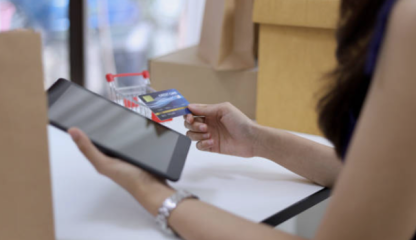According to a BVA survey, 86% of the French express interest in environmental labeling on the products they purchase. This interest is being considered by various stakeholders in both the private and institutional sectors, as evidenced by efforts around the Eco-score.
The Eco-score, scheduled to be implemented in March 2024, serves as an indicator to guide consumers in choosing products, whether in the food or textile categories. It will provide a new level of information in the form of a rating based on environmental impact, similar to the Nutri-score with a letter and color.
This initiative aims to categorize products based on their environmental impact, allowing consumers to easily compare the ecological repercussions of different items. As discussions accelerate in France, here's a summary of key information about the Eco-score and its calculation method.
The Initially Announced Calculation Method
Launched in 2021, this initiative was spearheaded by about ten private actors such as ScanUp, Yuka, Marmiton, La Fourche, and Seazon. Initially, the Eco-score relied on four main pillars:
- Product life cycle analysis (LCA).
- Positive mentions or environmental labels.
- Origin (country) of ingredients.
- Composition of packaging.
These data, developed in collaboration with scientists, experts, and food brands, are both public and private. However, the score has garnered divergent opinions. In 2023, the European Federation of Organic Agriculture initiated legal action against certain data providers, relying on Agribalyse, a leading environmental database, and involved in establishing the methodology. This federation believes that the Eco-score could disrupt consumers and harm other existing labels, such as organic.
Planned Evolutions of the Eco-score Calculation Method
Regardless of the outcome of the legal action, the French government has chosen to expedite the process. At the end of March 2023, clarifications were made to the calculation method for the environmental impact score of food and textile products.
Now, 16 evaluation criteria are considered, including aspects such as climate change, resource depletion, water consumption, eutrophication (pollution of certain aquatic ecosystems), as well as criteria favoring biodiversity preservation, such as agroecological infrastructures, crop diversity, and animal farming conditions.
Simultaneously, a consultation and the implementation of a calculation simulator, called Écobalyse, are planned to facilitate the application of the Eco-score. This simulator is based on experiments conducted since 2021, analyzing elements such as the quantity of ingredients, their origin, nature (organic or not), etc. It also takes into account the transformation of products, packaging, and various stages of distribution and consumption.
The Eco-score calculation method is constantly evolving, similar to the adaptation seen with the Nutri-score, aiming to provide a consistent and reliable result for each product. The final form of displaying the Eco-score, whether as a score out of 100, letters from A (low impact) to E (high impact), colors, or a combination of these modes, remains undetermined. Consumers, already familiar with the color code of the Nutri-score, might prefer a presentation that is familiar to them.
The Future of the Eco-score and the Impact of Other Testing Scores
A crucial choice looms between the Eco-score and the Planet-score, the latter developed by the ITAB (Institut Technique de l'Agriculture Biologique) and tested on over 1,000 food products by various industries and retailers since October 2021. Additionally, other initiatives, like the Carbon-score, are in testing in France to assess the carbon impact of products. However, many experts are concerned about the proliferation of ratings, fearing it may generate confusion among consumers.
At the European level, a directive named Green Claims is in preparation to regulate environmental communication practices and counter greenwashing, the practice of exaggerating an organization's environmental efforts. Announced in March 2023, this directive aims to encourage companies to provide tangible evidence of their commitment and be more precise in their statements. Companies will need to present this information either directly on their advertising materials or via a QR code, offering consumers access to various data before making a purchase.
Despite these challenges, brands and distributors must tackle the issue of the Eco-score, ensuring that crucial information for consumers is clearly displayed on product profiles and is reliable and regularly updated.



